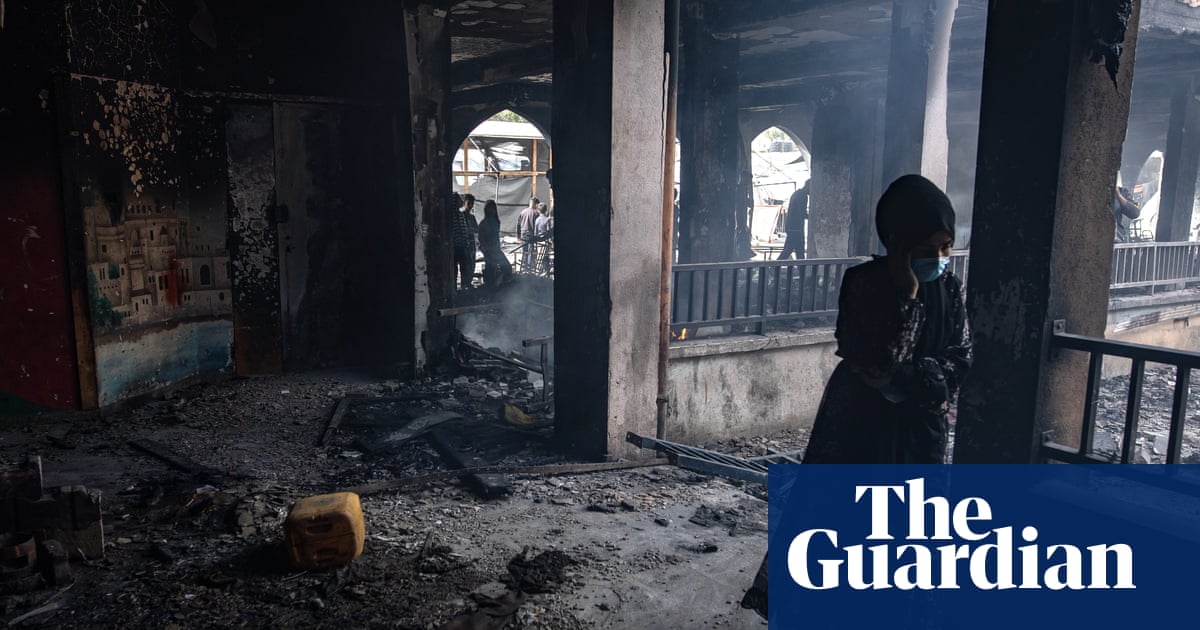At least 25 people have been killed in Israeli airstrikes across Gaza, including 11 in the bombing of a school turned shelter, the strip’s civil defence agency said, as Israel’s war against Hamas in the besieged Palestinian territory grinds on despite a new ceasefire proposal from Arab mediators.
Intense Israeli bombings hit several areas ofGazaon Wednesday, killing 11 in a school sheltering displaced people in the al-Tuffah neighbourhood of Gaza City. The strike ignited a huge fire which claimed most of the casualties, said the civil defence spokesperson, Mahmoud Bassal.
The Qatari network Al Jazeera and Palestinian media broadcast footage of several bodies wrapped in white shrouds at al-Shifa hospital’s morgue, and women weeping over the body of a child.
“We were sleeping and suddenly something exploded, we started looking and found the whole school on fire, the tents here and there were on fire, everything was on fire,” a witness, Umm Mohammed al-Hwaiti, told Reuters.
“People were shouting and men were carrying people, charred [people], charred children, and were walking and saying: ‘Dear God, dear God, we have no one but you.’ What can we say? Dear God, only,” she said.
Unusually, the Israel Defense Forces (IDF) did not comment on the school attack. Israeli officials say fighters from Hamas and allied factions hide behind civilian infrastructure, claims the Palestinian militant group denies.
Israel has renewed its aerial and ground campaign since the collapse of a two-month-old ceasefire and hostage and prisoner release swap in mid March. Since then, according to the UN, nearly 2,000 people have been killed and another 420,000 forced to leave their homes or shelters as Israel seizes ever-larger swathes of the territory for what it terms security buffer zones.
More than 51,300 Palestinians have been killed in Israel’s retaliatory offensive after the 7 October 2023 Hamas attack on Israel in which 1,200 were killed and another 250 taken captive. Fifty-nine hostages remain in Gaza.
Israel also imposed a total blockade on the strip two weeks before it unilaterally restarted the fighting; food, water, fuel and medicine are now running critically low, leading aid agencies to declare that Gaza’s already devastating humanitarian crisis is now worse than ever.
On Wednesday, the foreign ministers of the UK, France and Germany urged Israel to stop blocking aid into Gaza, warning of “an acute risk of starvation, epidemic disease and death”.
“Humanitarian aid must never be used as a political tool and Palestinian territory must not be reduced nor subjected to any demographic change,” the ministers said. The joint statement – unusually strong criticism from some of Israel’s closest allies – came several weeks after similar calls from the UN, EU and Arab states.
Efforts led by Qatari and Egyptian mediators to resume talks aimed at a ceasefire and ending the war have not yet led to a breakthrough. Reports of a new plan emerged on Wednesday that would include a truce of between five and seven years, and the release of the rest of the Israeli hostages seized in October 2023.
Sign up toGlobal Dispatch
Get a different world view with a roundup of the best news, features and pictures, curated by our global development team
after newsletter promotion
A Hamas delegation travelled to the Egyptian capital of Cairo late on Tuesday to discuss the proposal. Israel has not responded to the invitation to another round of indirect negotiations.
There has been little sign either side is willing to move closer on fundamental issues such as the disarmament of Hamas or the withdrawal of Israeli troops, although it is believed mediators are under pressure from Washington to show progress before Donald Trump’s visit to the Middle East next month.
The president of the West Bank-based Palestinian Authority (PA), Mahmoud Abbas, made a rare intervention in the conflict on Wednesday in which he called for Hamas to free the Israeli hostages, saying their captivity provided Israel with “excuses” to attack Gaza.
Basem Naim, a senior Hamas official, called Abbas’s remarks “insulting”. Hamas and Abbas’s secular Fatah party, which dominates the semi-autonomous Palestinian Authority, fought a brief civil war in 2007 that resulted in Hamas seizing control of Gaza.
